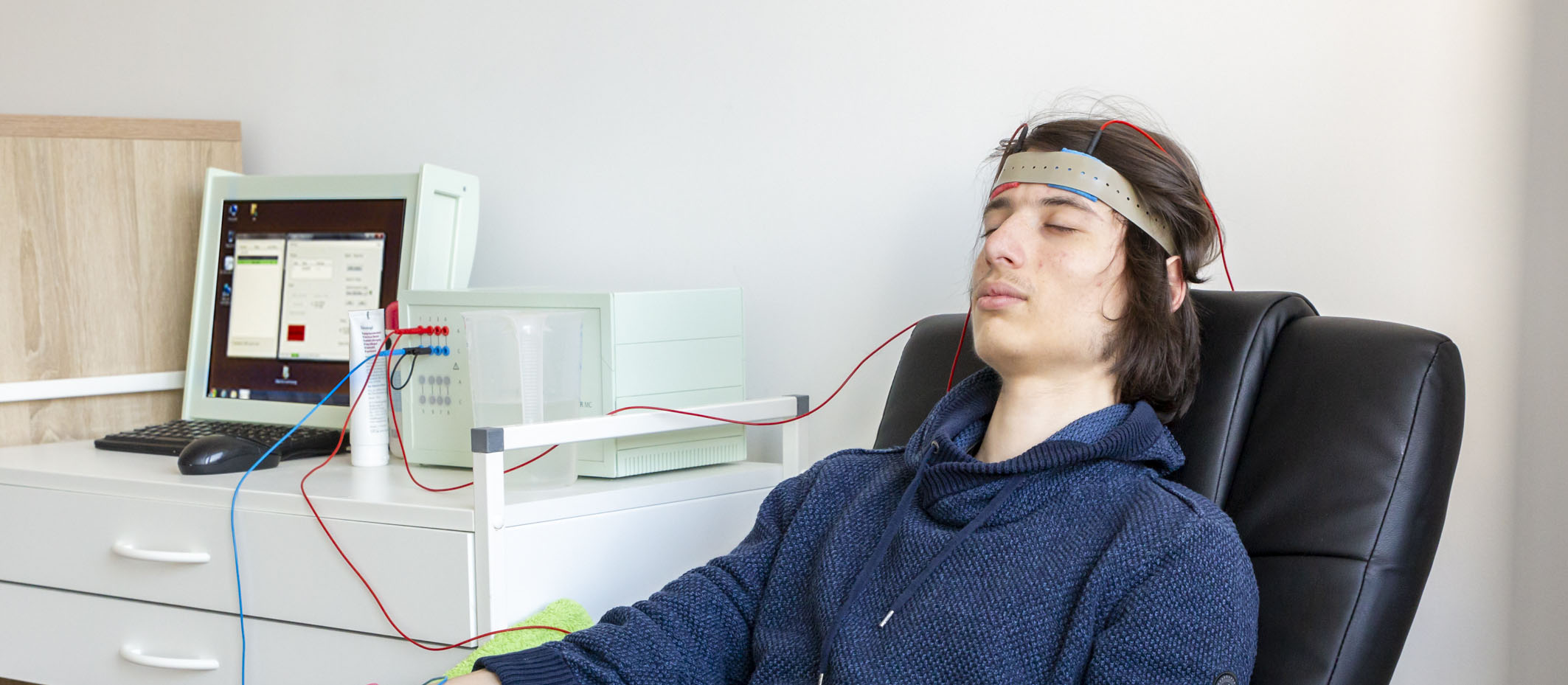Elements of Holistic Vision Restoration
For the optimal use of brain mechanisms, Savir-therapy combines several modules to maximally activate the residual vision for each patient. The therapy follows a holistic concept: holistic means that all the important factors about vision are considered as parts of the therapy. The selection of vision restoration modules is evidence-based and can be explained by reasonable scientific arguments.

Transorbital Alternating Current Stimulation (tACS)
The core of Savir therapy is the daily treatment with alternating current. These current impulses stimulate the nerve cells of the retina and make them work at the same time. The treatment requires neither medication nor surgery, and it is painless. Furthermore, the side effects are minimal: slight tingling during treatment and rarely short-termed headaches.
During the ten-days therapy, the treatment is performed daily for 30 to 50 minutes. After the patients arrive in the treatment room, all patients need to do is to sit down on a comfortable chair with their eyes closed. Two electrodes are held on the forehead, delivering tiny current pulses. As a result, the patient sees a weak, pulsating light. These light perceptions (phosphates) indicate that the nerve cells are sufficiently stimulated. The firing of nerve impulses can improve blood circulation, and it does not only help the target nerve cells but also the “mute” cells in the surrounding area.
Scientific studies and our clinical experience have shown that more than 70 percent of patients notice improvements in their visual performance. Both objectively and subjectively. On the statistical average, the degree of improvement is 24% if the entire visual field is considered and 60% if only the damaged area is evaluated. These improvements are usually stable for six to twelve months. For some patients, the improvement may last for years (often depending on how frequently the patient practiced the learned exercises at home).
Eye Yoga
Eye yoga has a positive effect on myopia, hyperopia, and also eye movement problems. Studies found out that eye yoga can keep the eye muscles flexible, improve synchronization of both eyes, and helps relax the tissue around the eyeball. Those factors are essential for good vision. Therefore, eye yoga is included as a part of Savir therapy. During the practice of eye yoga, the eyes are directed in all directions: up and down, right and left, in a circle, and directed towards the tip of the nose. In addition to that, face and shoulder massages, as well as other relaxation exercises, will be practiced during the eye yoga session.
Understanding the Disease and Improving Life Quality
This session is a further education module with practical instructions. The aim is to let the patients understand more about their visual impairment: how vision loss might affect their life and the possible solutions to the related problems. Additionally, the information about optical aids and local recovery programs is also provided. We recommend self-help groups and other local options that can offer the patient further services. To strengthen the blood circulation system, dietary supplements, and suitable sports are also recommended for each patient.
Vision Training
For further improvement after the treatment, several vision exercises are recommended for patients to practice at home. This includes “pirate training” and eccentric attention training: a visual training that can be practiced at home while watching television. Depending on the type of vision impairment, we also refer to other vision restoration training and, in rare cases, compensation training.
Relaxation Method
According to research studies, continuous stress is a known risk factor for the development of vision loss. Furthermore, relaxation is extremely important in reducing the toxic effects caused by stress hormones (cortisol, endothelin), which can lead to vascular dysregulation. Relaxation training also reduces worry, anxiety, and tension, as well as other psychological problems of people with visual impairments. Thus, Savir center offers chances for patients to learn relaxation techniques: meditation, autogenic training, and progressive muscle relaxation.
Psychological Consultation
Psychological counseling is another focus of Savir vision restoration therapy. During the consultation, the life perspective, the problems in daily activities, and the stresses of the family members are discussed. The goal is to reduce mental stress, as stress plays an important role in the development of vision loss.
The consultation is also designed for family members of patients. According to our experience, family members are usually facing the same psychological issues as patients. Help them to understand the situation can improve the life quality and social environment for people with vision loss.

